What Do You Need for Baby Chicks
If you have the questions, what do you need for baby chicks? This list will give you the answer you need. Know what to have as far as housing, food, heat, and knowledge so you can start out confident as a new chicken owner.
How to raise chickens from day one with the supplies you need for them to be healthy and happy.
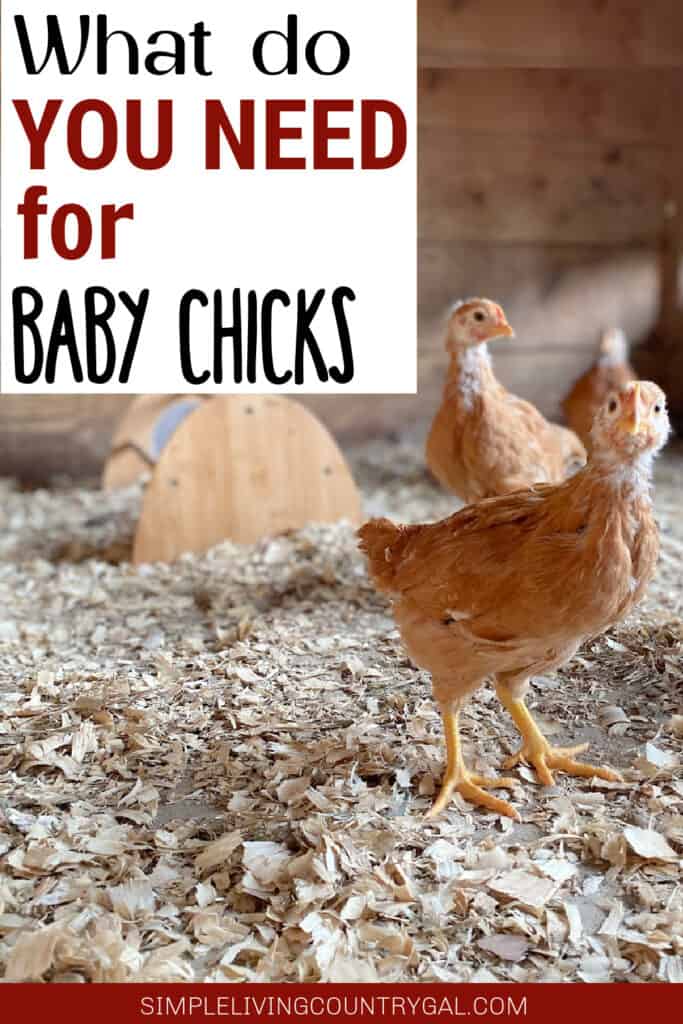
Having chickens in our backyard is one of my favorite parts of homesteading. There is just something about farm-fresh eggs that taste better and look better than what you can get at the store. For a healthy flock, it’s good to start out right, having all the supplies in place and ready to go.
This guide will help you prepare a home for your chicks that includes all the parts before you bring them home.
Where can you get baby chicks?
Before we dive into what you need for baby chicks, let’s first talk about where you can get them. There are a few different options:
#1. Hatcheries:
You can order baby chicks from hatcheries online or through mail-order catalogs. This is a good option if you want a specific breed and don’t have any local sources. This is my preferred way of ordering because they are very accurate with sexting.

What does sexting chicks mean?
Sexting chicks is the process of identifying the gender of a chick. This is important because you may not want or be allowed to have roosters in your backyard due to noise complaints or city ordinances. By ordering from a hatchery, you can usually request only female chicks, ensuring that you won’t accidentally end up with any roosters.
#2. Feed Stores:
Many local feed stores, such as Tractor Supply, will carry baby chicks during the spring and early summer. This is a great option if you want to see the chicks before purchasing. These chicks will most likely be the most affordable, too. Just be aware that sexting is not as successful when you purchase this way, and you may end up with a few roosters.
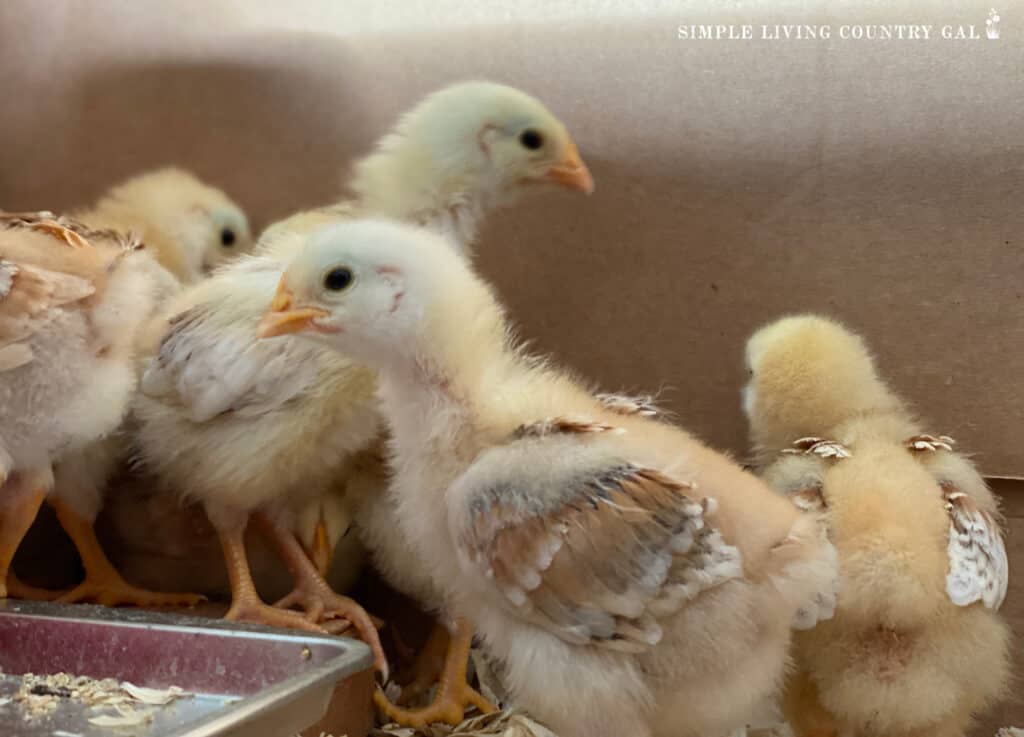
#3. Local Breeders:
You can also find local breeders through online classifieds or by asking around your community. This is a good option if you want to support small-scale chicken farmers, get advice from experienced owners, or raise a unique breed of chicken.
Be prepared before you bring chicks home
Baby chicks do not need a lot starting. Just a safe home, very warm temps, food, and water. Let’s look at each individually.
Baby Chick Housing
The main goal of a baby chick house, often referred to as a brooder, is to replicate a warm, protective mother. To do that, you will want to have the following elements.
- Brooder Box: This is the physical structure that houses the chicks. It needs to be spacious enough for the chicks to move around comfortably. It could be a simple cardboard box or a more elaborate and permanent structure.
- Bedding: To keep the brooder clean and absorb droppings, bedding is crucial. Pine shavings are commonly used due to their high absorbency and low cost.
- Heat Source: Baby chicks need warmth, especially during their initial weeks. An infrared heat lamp or a brooder heater can help maintain the required temperature.
- Feeder and Waterer: Chicks need constant access to food and fresh water. Special feeders and waterers designed for chicks prevent them from contaminating their food and water with waste.
- Perch: A low perch can help chicks practice roosting, which is an essential behavior for adult chickens.
740 Little Giant Screw-On Poultry Waterer Base Bundled with Little Giant Screw-On Poultry Jar Heavy Duty Translucent Plastic Container | 1L Chick Waterer Set | Perfect for Chicks, Quail, and Ducks



There are several types of housing options available for baby chicks, each with its own unique set of advantages:
1. Plastic Storage Bins:
Also known as a tote, these containers can work well as a brooder.
Pros: These are inexpensive, easy to clean, and quick to move around.
Cons: The plastic can be slippery for chicks to walk on, causing them to “grip” with their feet. This can lead to Curly Toe, a foot condition that can affect baby chicks.
2. Cardboard Boxes:
A cardboard box is a classic option for a chick brooder because they are readily available.
Pros: Since you can get them for free, they are very cost-effective. They come in a large range of sizes, allowing you to provide a spacious area for the chicks to roam freely.
Cons: Boxes can get soiled or wet from water and manure, meaning you may need to replace them before your chicks are ready to go outside.
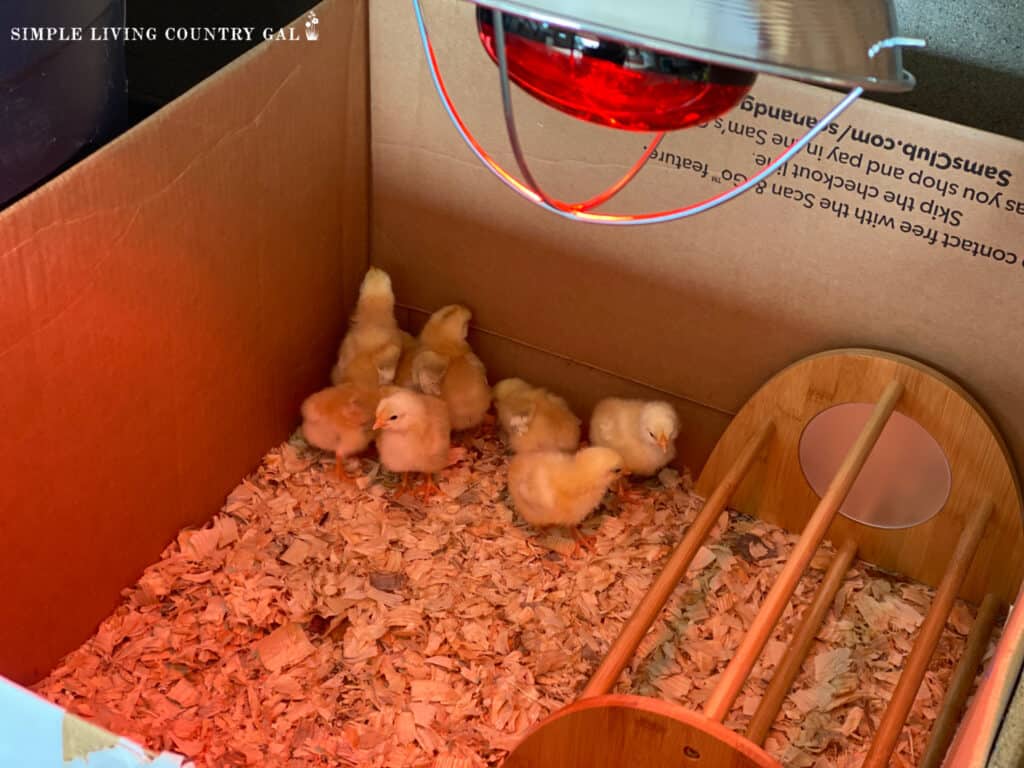
3. Wood Box
Another option that is quite durable for a brooder is a wooden box.
Pros: Wooden boxes are durable and easy to clean. They also provide a more natural environment for the chicks compared to plastic or cardboard.
Cons: They can be quite heavy to lift, even when empty, making them hard to move around.
4. Complete Brooder setups:
You can also purchase a brooder box with all the parts ready to set up and fill with baby chicks. This is a more expensive option, but you will not have to worry that there are any missing components.
Pros: Many come with everything you need including a feeder, waterer, heat, and roost.
Cons: Brooder setups can be more costly than DIY options.
Large Wooden Brooder Box for Chicks with Bulb Set and Thermometer – Accommodates Up to 35 Chicks – Ideal for Chickens, Ducks, Quails, Hamsters, and Lizards(32x16x16 Inches)


Remember, regardless of the type of housing used, the chicks’ safety and comfort should be the top priority. Their environment should be warm, free of drafts, and safe from predators.
What sized brooder do you need for baby chicks?
The size of the brooder you need depends on the number of chicks you have. A good rule of thumb is to provide 2-3 square feet per chick. This gives them enough space to move around, exercise, and sleep comfortably.
Parts of a Brooder
Now that you have your brooder picked out, you will next need to stock it with the appropriate supplies.
1. Heat Source
Heat is crucial for the survival and well-being of baby chicks, as they are unable to regulate their own body heat effectively. A heat source should be placed in one corner of the brooder, allowing the chicks to move away from it if they become too warm.
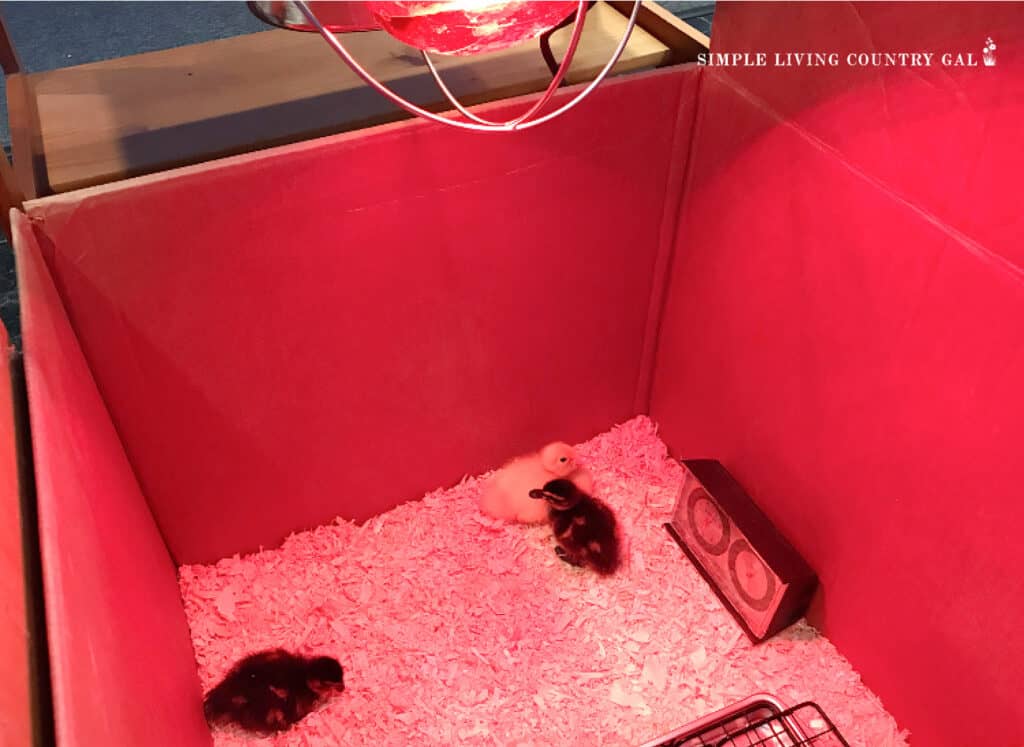
What temperature does a brooder need to be for baby chicks?
The brooder temperature should start at 95°F (35°C) for the first week and gradually decrease by 5 °F each week until they are fully feathered. This is usually around 6-8 weeks of age. It’s important to monitor the temperature regularly and make adjustments as needed.
2. Bedding
The bedding in your brooder serves several purposes – it absorbs moisture, provides insulation, and helps keep the chicks clean. Some common bedding options include pine shavings, shredded paper, or straw. It’s important to clean and replace regularly.
3. Baby Chick Feed and Water
Chicks should have free access to a balanced chick starter feed, which is specially formulated to provide all the nutrients they require. The feed can be placed in a shallow dish or a chick feeder, which is designed to prevent chicks from perching on the feed and contaminating it.
Water is equally important and should be available at all times. Baby chicks cannot swallow dry food without water. A chick waterer, which prevents the chicks from falling in and drowning, is most recommended. It’s essential to ensure the water is clean and fresh to prevent the spread of diseases.
To keep the food and water neat, you can purchase risers to lift them up off the ground.
Remember, never let the chicks run out of feed or water. Their growth and overall health depend on constant access to both.
4. Roost
Chicks have adult instincts, and that means having a roost in the brooder will help them to learn how to act as a grown hen. A roost simulates a tree branch and gives chicks something to jump onto, run around, or hop off.
The ideal height for the roost should be about 6 inches (15 cm) off the ground. You can purchase a small roost online and put it inside the brooder. This is nice to have but not required for baby chicks.
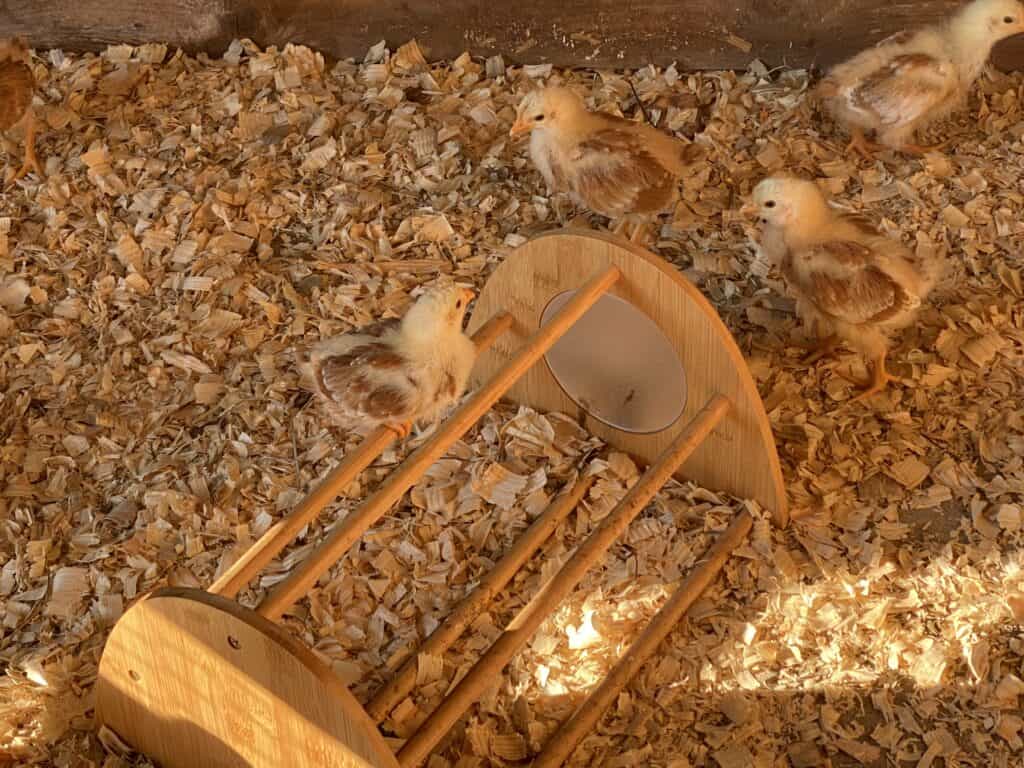
5. Protection
Even young baby chicks can jump out of a brooder, risking injury. For that reason, you will want protection that will keep them from getting out and keeping pets or young children from getting in. You can use a screen or chicken wire using zip ties to secure it over the top.
Raising baby chicks can be fun and rewarding for the entire family. Start a flock of chickens that feel safe and secure from day one. Now that you know what you need for baby chicks, you can start your flock with confidence. Remember to keep things clean, replace bedding as needed, and always ensure your chicks have clean water and plenty of food. If you do, you will start off right raising a flock of egg laying hens.










Nice Article. We need to get chicks sometime soon. I have 20 hens and half of them will need replacing in about 8 months. New chicks are always a hassle until they can go out in the coop.
Yes, I agree!! I have a junior holding area for our new chickens that I keep them in until they are old enough for the coop. I only use this when I have existing chickens.
Good Luck!
Tracy Lynn